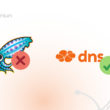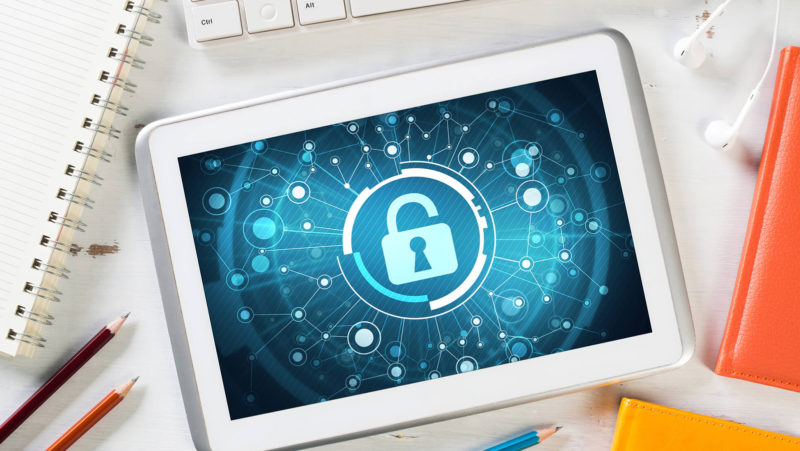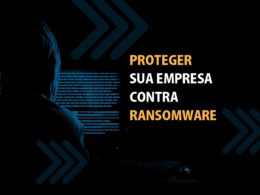The year 2017 was marked by many events in the world of information security. We had the emphatic May 12 and the ransomware attacks with Wannacrypt , where thousands of companies and organizations from around the world were affected, as well as several other waves of attacks worldwide.
These events showed how vulnerable the corporate world is about information security and reaffirmed the need for investments in virtual attack prevention and corporate data protection. Unfortunately the theme information security is not yet priority and most companies do not have policies for the use of technology and internet, prevention procedures and efficient controls to manage vulnerabilities and mitigate risks and losses in case of attacks.
The sequence of attacks points out that the market should also consider the expansion of cybercrime, especially in the form of ransomware, which, with the use of cryptocurrencies for financial movements, makes it difficult to trace and identify criminals.
Of course, with security incidents and financial losses caused, many lessons have already been learned and even proven. The main thing is that no company is 100% safe, as the forms of attacking constantly change and vulnerabilities are in the most varied points, such as users themselves. Another lesson is about the importance of business information and the need for data protection, regardless of the size of organizations, large corporations and small businesses can have huge losses or simply stop operating without access to your business data and systems.
This scenario is also not new, organizations and companies in the area permanently reinforce the need to give more attention to cybersecurity. And creating policies that can prevent incidents, guiding users and protecting infrastructures and corporate information is much more than a trend, today is an urgency.
Fortunately, some changes are being noticed and will gain strength in 2018, according to Gartner the investment in information security will grow 8% this year. As a trend stands out the need for continued prevention measures, following the evolution of risks and forms of attacks. It is not enough to invest in infrastructure or security systems, without monitoring and monthly and even daily update, any solution can become inefficient or obsolete within a few days.
Although it is virtually impossible to be fully protected, with proper planning and properly well executed measures, it is possible to prevent many problems. To assist in this planning we have listed some points and trends that your business should direct attention and investments regarding information security:
Start by guiding users
In a survey conducted by PWC it was found that 41% of security incidents in Brazil originated in the company's own employees, above the world average of 35%. Another survey conducted by Intel showed that only 3% of users are able to identify a phishing .
With the lack of knowledge and attention of users, almost 4 in 10 incidents occurs from the misuse of technology and internet resources by users. For example, by clicking on fake email messages or unknown links on dubious network sites, a simple error like this can open the door to virus or ransomware on the company's network.
Therefore guide and train users to be able to identify risks and use the internet securely , is critical. Users also need to understand their responsibility for the use of technology and losses caused by possible incidents, so they will use resources more responsible in the corporate environment.
Security and antivirus systems (always updated)
A good antivirus system is one of the most effective ways to prevent and combat attacks against corporate network and company information. For more reliable protection, it is recommended to purchase a good antivirus system that has available technical support and daily updates.
To act at a network level, it is also recommended to have a firewall system in the corporate network, where it is possible to create blocks between the internet and the company's internal network. Likewise it is important to keep these systems properly up to date so that they can block attacks that appear daily in different formats.
Policy for the use of technology resources
Nowadays the use of technology and internet is part of the daily life of employees in the workplace, using computers, smartphones, management systems, emails, internet browsing and so many other activities.
Because technology and the internet are very wide and so present, it is necessary to define how these features can be used in the workplace. For example, using a personal flash drive with viruses in the company can contaminate the entire network, and access games or work sites at work, which usually contains links to harmful websites, can open a door to virtual attacks.
Management and control of internet use
The internet is the main gateway to incidents and safety failures, which can occur in numerous ways. For example, it is not uncommon for a user to click on a fake message link in the corporate email, which will direct you to a harmful site on the network, which in turn will install (hidden) a virus on the user's machine. With the virus installed and combined with other vulnerabilities, such as the use of weak passwords, it is possible to access the company's internal network, servers and corporate data. This is the mechanics of most virtual attacks.
Considering the example, it would be possible to avoid access to harmful websites through browsing control tools that can identify these risks.
Regarding the use of the internet, it is also important to guide users about network risks, any error or lack of attention can make the company vulnerable to attacks. For this you can create a document content guidelines and guidelines on the use of the internet , informing the company's policy regarding the use of the network.
Safe password policy
90% of passwords are estimated to be vulnerable and could easily be discovered by specialized systems.
Considering that the password is the main feature for proving a user's authenticity and protecting access to bank systems, management systems, email accounts, social networks and so many other systems, it is very important to follow some tips and recommendations in password creation and management .
Data backup
Maintaining a (or more) copy (s) of all company data is critical. Try to imagine your business to suffer some kind of attack or lose all corporate data in some way (spreadsheets, system database, customer data and sales, emails, etc.), surely the damage is immense.
Unfortunately thousands of companies in Brazil have already experienced this situation with ransomware attacks. If your company does not have a copy of the information, it can be in the hands of criminals, having to pay to gain access to the data, without guarantee that the data will be redeemed with integrity.
Nowadays with cloud features keeping updated copies has become quite accessible and practical. See some points that should be evaluated for a good backup policy:
- frequency : monthly, weekly, daily, hourly?
- Storage time : Store weekly copies for 10 weeks, daily copies for 30 days?
- Level of each backup : Integral, differential, incremental?
- Media or storage location : in cloud, external hard drives, ribbons?
- Data Origin : Files, spreadsheets, documents, databases, emails?
As has been said, there is no way to guarantee 100% protection against the risks of the network. But with some preventive measures such as those mentioned above, it is possible to prevent incidents and avoid problems such as loss of business data.
Finally, be sure to pay due attention to information security in your company, the risks are very high, the damage can be high and criminals are increasingly active and bold.











